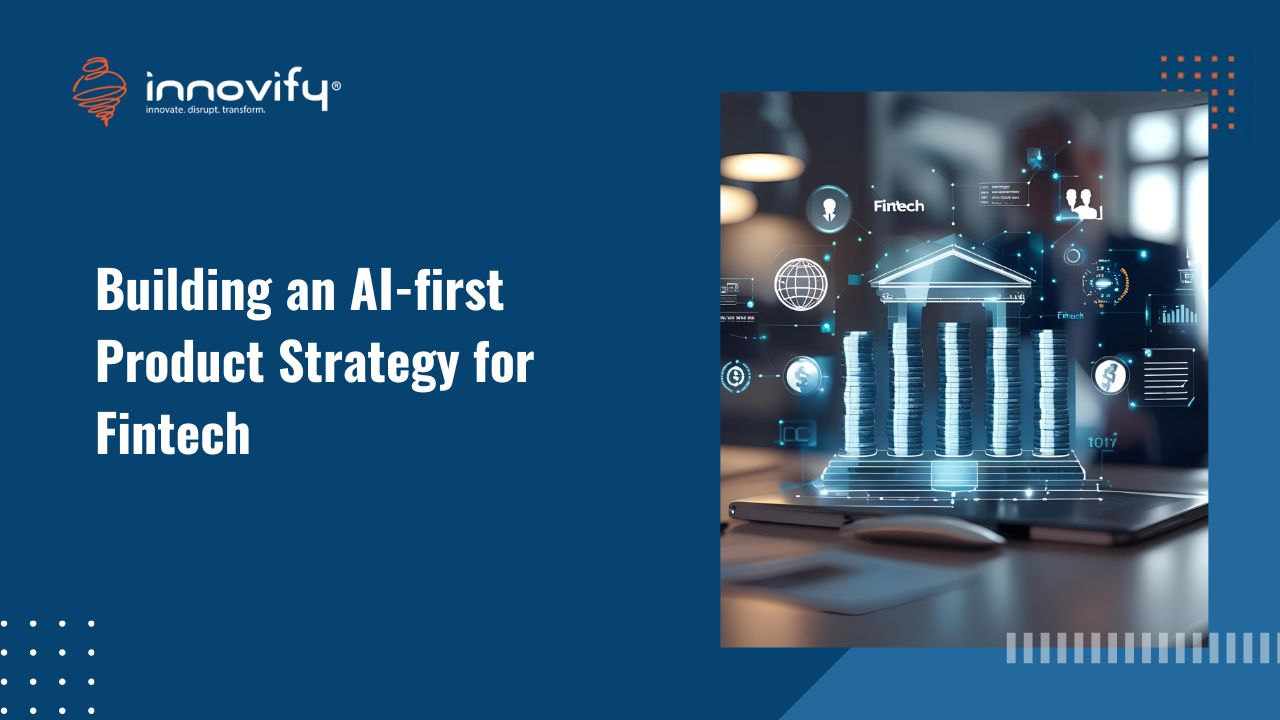AI/ML
Accelerate Growth with Agile Transformation: 13 Powerful Benefits to Experience
Are you tired of traditional, rigid software development and project management approaches? What if there comes the time to break free from the chains of outdated methodologies and embrace a transformative shift? Welcome to the world of Agile!
In this content piece, we will delve into the captivating realm of Agile transformation and uncover its remarkable benefits. Say goodbye to lengthy development cycles, missed opportunities, and dissatisfied customers. With Agile, organizations can unlock a new level of responsiveness, adaptability, and success.
Don’t waste your time and fasten your seatbelts to get ready to explore the exciting benefits that come with adopting an Agile approach. Discover how Agile can revolutionize your business, empower your teams, and create a harmonious synergy between innovation and customer satisfaction. Let’s embark on this transformative journey together and witness the magic of Agile unfold before our eyes.
13 Benefits of Agile Transformation to Drive Success and Innovation
Here is the time to unleash the power of Agile Transformation! Discover the game-changing benefits of adopting an Agile software development and project management approach. Agile is the key to unlocking your organization’s full potential in today’s dynamic business landscape, from increased flexibility and faster time to market to improved collaboration and enhanced customer satisfaction.
1. Increased Flexibility and Adaptability
In today’s fast-paced and dynamic business environment, organizations must be on the table and adaptable to stay ahead. Agile transformation enables increased flexibility by promoting iterative development, allowing for frequent adjustments and refinements. It empowers teams to respond quickly to changing requirements, market conditions, and customer feedback.
By embracing Agile methodologies, organizations gain the agility to pivot, adapt, and seize new opportunities, ensuring they stay relevant and competitive in a rapidly evolving landscape. Agile transformation’s increased flexibility and adaptability are vital for sustained success and growth.
Here are the key agile transformation benefits, considering increased flexibility and adaptability:
- Agile Planning and Prioritization
- Embracing Change
- Iterative and Incremental Development
- Quick Time-to-Market
- Continuous Learning and Improvement
- Cross-Functional Collaboration
- Risk Mitigation
- Scalability and Flexibility in Team Structure
- Customer-Centric Development
2. Faster Time to Market
In the competitive landscape of today’s business world, organizations strive to bring their products and services to market quickly. Agile transformation is vital in achieving faster time to market, enabling businesses to capitalize on opportunities and stay ahead of the competition.
Here are the key benefits of faster time to market:
- Rapid Iterative Development
- Early Value Delivery
- Agile Planning and Prioritization
- Flexibility to Adapt
- Continuous Feedback and Validation
- Reduced Waste and Rework
- Competitive Advantage
- Improved Customer Satisfaction
- Increased ROI and Revenue Generation
3. Effective Response to Changing Requirements
Let’s face the fact that speed is crucial. Agile transformation accelerates time to market by promoting iterative development, continuous integration, and shorter release cycles. By breaking down projects into manageable increments, Agile teams can deliver valuable features and functionality more frequently.
This allows organizations to gather feedback early on, make necessary adjustments, and release products or services faster. The ability to swiftly bring solutions to market gives businesses a competitive edge, maximizes customer satisfaction, and capitalizes on emerging opportunities, driving overall success and growth.
Here are the key benefits of an effective response to changing requirements:
- Agility and Flexibility
- Iterative Development
- Continuous Collaboration
- Prioritization and Focus
- Fast Feedback Loops
- Adaptability to Market Changes
- Reduced Risk of Building the Wrong Product
- Efficient Resource Allocation
- Faster Time-to-Market
- Customer Satisfaction and Retention
4. Cultivating a Culture of Continuous Improvement
In a dynamic business environment, requirements often evolve. Agile transformation equips organizations with the ability to respond effectively to these changes. By embracing Agile practices, teams adopt a flexible mindset and iterative approach, enabling them to quickly adapt to shifting priorities, customer needs, and market demands.
Agile empowers frequent collaboration and feedback loops, facilitating timely adjustments and ensuring the final product aligns with evolving requirements. This enables organizations to stay responsive, deliver value-driven solutions, and maintain a competitive edge in an ever-changing landscape.
Here are the key benefits of fostering a culture of continuous improvement:
- Learning and Growth Mindset
- Employee Engagement and Empowerment
- Transparent and Constructive Feedback
- Streamlined Processes and Efficiency
- Quality and Customer Satisfaction
- Adaptability and Resilience
- Data-Driven Decision Making
- Continuous Learning and Development
- Sustainable Growth and Competitive Advantage
5. Empowered and Engaged Teams
Agile transformation empowers teams by fostering a culture of collaboration, ownership, and continuous learning. By adopting Agile practices, organizations create an environment where teams are encouraged to make decisions, take ownership of their work, and contribute their unique skills and perspectives. This empowerment leads to increased engagement, motivation, and productivity.
Agile methodologies, such as Scrum or Kanban, provide clear roles, transparent communication, and regular feedback, ensuring teams have the needed support and guidance to deliver high-quality outcomes. Empowered and engaged teams drive successful Agile transformations, fueling innovation and achieving remarkable results.
Here are the key benefits of having empowered and engaged teams:
- Ownership and Accountability
- Collaboration and Communication
- Continuous Learning and Growth
- Decision-making Autonomy
- Motivation and Engagement
- Innovation and Creativity
- Adaptability and Resilience
- Higher Productivity and Quality
- Employee Satisfaction and Retention
- Better Customer Collaboration
6. Cost Control and Resource Optimization
Agile transformation brings inherent benefits in cost control and resource optimization. By embracing Agile methodologies, organizations focus on delivering incremental value, prioritizing features that generate the most impact. This approach minimizes wasted effort and resources on unnecessary features, ensuring efficient time, budget, and workforce utilization.
Agile practices, such as regular feedback loops and continuous improvement, enable teams to identify and address inefficiencies promptly. The iterative nature of Agile also permits the early identification of risks and bottlenecks, enabling proactive mitigation strategies. With cost control and resource optimization as crucial outcomes, Agile transformation paves the way for sustainable growth and profitability.
Here are the key advantages of implementing Agile practices for cost control and resource optimization:
- Continuous Prioritization
- Transparency and Visibility
- Efficient Resource Allocation
- Predictable Delivery and Budgeting
- Collaboration and Cross-functionality
- Continuous Monitoring and Adaptation
- Lean Thinking Principles
- Improved Risk Management
7. Scalability and Adaptability
Agile transformation empowers organizations with the scalability and adaptability needed to thrive in a dynamic business landscape. By embracing Agile practices, teams can quickly scale their operations, whether adding more members, expanding to new markets, or accommodating increased project complexity. Agile methodologies, such as Scrum or Kanban, provide flexibility in adapting to changing priorities, customer needs, and market trends.
The iterative and incremental approach allows for quick adjustments and course corrections, ensuring that organizations can adapt their strategies and deliver value even in rapidly evolving environments. With scalability and adaptability at the core, Agile transformation positions organizations for sustained success and future growth.
Here are the key advantages of implementing Agile practices for scalability and adaptability:
- Flexible and Agile Framework
- Iterative and Incremental Approach
- Rapid Time to Market
- Continuous Planning and Prioritization
- Cross-functional Collaboration
- Scalable Architecture and Infrastructure
- Continuous Improvement
- Agile Portfolio Management
- Scalable Workflows
- Scalable Agile Practices
8. Improved Collaboration and Communication
Agile transformation revolutionizes collaboration and communication within organizations. By breaking down silos and promoting cross-functional teamwork, Agile fosters a culture of collaboration and open communication. Agile methodologies, such as daily stand-up meetings and regular feedback loops, enhance transparency and alignment among team members. With increased collaboration, information flows seamlessly, enabling faster decision-making, problem-solving, and knowledge sharing.
Agile practices encourage active participation, respect diverse perspectives, and promote a sense of shared ownership. The result is improved productivity, stronger relationships, and a cohesive working environment where collaboration and effective communication drive project success.
Here are the key advantages of implementing Agile practices for improved collaboration and communication:
- Cross-functional Collaboration
- Daily Stand-up Meetings
- Visual Management
- Continuous Feedback and Retrospectives
- Agile Tools and Technologies
- Stakeholder Engagement
- Improved Customer Collaboration
- Effective Communication Channels
- Culture of Openness and Trust
9. Enhanced Quality and Customer Satisfaction
Agile transformation brings a focus on delivering high-quality outcomes that meet customer expectations. By embracing Agile practices, organizations prioritize customer satisfaction through continuous feedback, early validation, and incremental delivery. Agile methodologies, like test-driven development plus continuous integration, promote a rigorous approach to quality assurance.
Agile teams can ensure that the final product or service meets or exceeds customer expectations by addressing issues promptly and incorporating customer feedback throughout the development cycle. Enhanced quality leads to customer satisfaction and builds trust, loyalty, and a positive brand reputation.
Here are the key advantages of implementing Agile practices for improved quality and customer satisfaction:
- Early and Continuous Feedback
- Customer-Centric Approach
- Continuous Testing and Quality Assurance
- Collaboration for Quality
- Continuous Improvement
- Iterative Development and Feedback Incorporation
- Transparency and Visibility
- Continuous Delivery and Deployment
- Customer Involvement in Prioritization
- Continuous Customer Engagement
10. Increased Productivity and Efficiency
Agile transformation drives increased productivity and efficiency within organizations. Agile teams can deliver value more efficiently by breaking down projects into manageable increments and adopting iterative development practices.
Agile methodologies streamline processes, eliminate bottlenecks, and enable teams to focus on high-priority tasks, resulting in improved productivity and optimized resource utilization. With increased productivity and efficiency, organizations can achieve more in less time, drive innovation, and stay competitive in the market.
Here are the key advantages of implementing Agile practices for improved productivity and efficiency:
- Iterative and Incremental Approach
- Focus on Prioritized Work
- Cross-functional Collaboration
- Empowered and Self-Organizing Teams
- Transparent and Visible Work Progress
- Continuous Improvement
- Rapid Decision-making
- Time-Boxed Iterations
- Constant Learning and Skill Development
11. Risk Mitigation and Predictability
Agile transformation brings a proactive approach to risk mitigation and predictability. Organizations can identify and address potential risks early on by adopting Agile methodologies through regular feedback loops and iterative development. Agile practices, such as frequent communication and continuous improvement, enhance transparency and enable teams to adapt quickly, minimizing risks and ensuring project predictability.
With a focus on risk mitigation, organizations can navigate uncertainties effectively and confidently achieve desired outcomes.
Here are the key advantages of implementing Agile practices for risk mitigation and achieving predictability:
- Early and Continuous Risk Identification
- Incremental Delivery and Feedback Loops
- Iterative Risk Assessment and Mitigation
- Cross-functional Collaboration and Knowledge Sharing
- Transparent and Visible Progress
- Continuous Risk Monitoring and Management
- Empowered Teams and Decision-making
- Data-Driven Decision-making
- Continuous Improvement and Risk Learning
12. Competitive Advantage
Agile transformation gives organizations a competitive advantage in today’s fast-paced business landscape. Hence, it showcases the business benefits of agile transformation. By embracing Agile methodologies, organizations can respond quickly to market changes, deliver value-driven solutions faster, and stay ahead of the competition.
Agile’s focus on customer-centricity, innovation, and continuous improvement enables organizations to differentiate themselves, attract customers, and gain a competitive edge in their industry.
Here are the key benefits of Agile practices in driving competitive advantage:
- Faster Time-to-Market
- Adaptability to Market Changes
- Customer-Centricity and Satisfaction
- Innovation and Creativity
- Continuous Improvement and Learning
- Enhanced Team Collaboration and Productivity
- Agile Project Management and Transparency
- Employee Engagement and Retention
- Continuous Delivery and Quality Assurance
- Scalability and Efficient Resource Allocation
13. Stakeholder Alignment and Transparency
Agile transformation fosters stakeholder alignment and transparency, ensuring everyone is on the same page. Agile methodologies promote regular communication, feedback, and collaboration with stakeholders.
By providing visibility into project progress, challenges, and decision-making, Agile enables stakeholders to participate, provide input, and make informed decisions actively. This alignment and transparency lead to stronger partnerships, increased trust, and successful project outcomes.
Here’s how Agile practices contribute to these essential aspects:
- Collaborative Decision-making
- Clear and Shared Vision
- Transparent Communication
- Iterative and Incremental Delivery
- Regular Stakeholder Engagement
- Adaptive Planning and Flexibility
- Risk Identification and Mitigation
- Stakeholder Empowerment
- Continuous Feedback Loop
Unleash Your Agile Advantage: Embrace the Future of Success!
In a rapidly evolving business landscape, embracing Agile transformation is the key to unlocking benefits. From increased flexibility and adaptability to faster time-to-market, effective response to changing requirements, and a culture of continuous improvement, Agile empowers organizations to thrive in the face of challenges.
By cultivating empowered and engaged teams, controlling costs, and optimizing resources, organizations can soar to new heights of productivity and efficiency. With scalability, enhanced collaboration, and improved customer satisfaction, Agile allows you to stand out, leaving competitors in the dust.
Embrace the power of Agile, where stakeholder alignment and transparency pave the way for success. Let innovation, quality, and stakeholder empowerment drive your organization forward, propelling you to achieve a competitive advantage that sets you apart in the ever-changing marketplace.
Experience the magic of Agile transformation and watch your organization soar to new heights with Innovify. Embrace the future of success, unleash your Agile advantage, and shape a thriving tomorrow filled with endless possibilities. The time for Agile transformation is now, and the rewards await those who dare to seize them!




